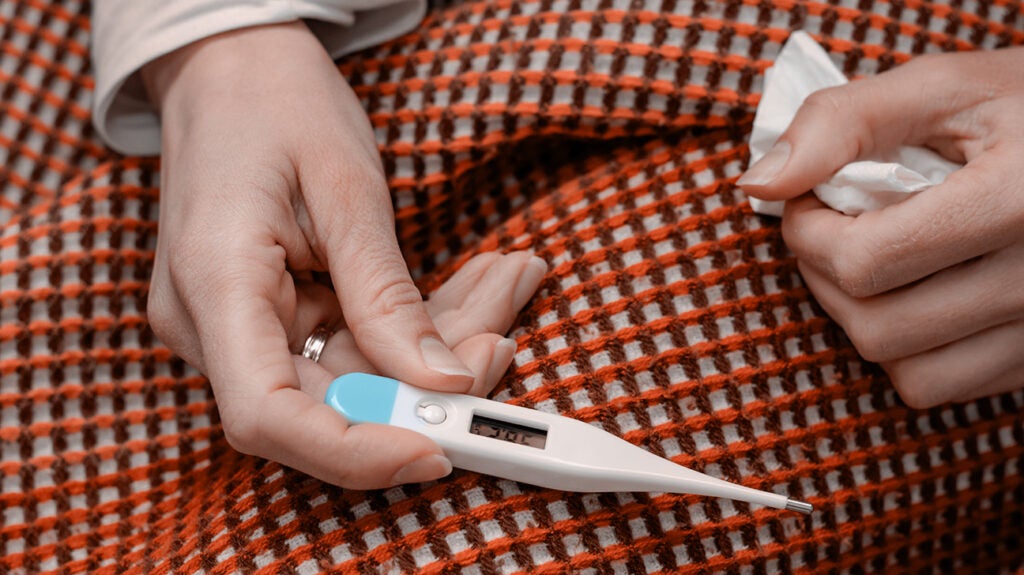Norovirus Symptoms: The Complete Early Detection and Management Guide
Norovirus Summary: Known as the "stomach flu," norovius is an extremely contagious virus that causes acute gastroenteritis. This makes it a major health concern as nearly 685 million cases of illness and almost 750,000 deaths annually all are due to its result. It preferentially targets the GI tract, but its repercussions are severe and can result in dehydration and a systemic cascading septic process if not promptly identified.
Viruses: Types, Definition, Characteristics & Facts
Know the signs and symptoms: Detecting norovirus is important to act in time and prevent its spread. Symptoms of CDI can easily be confused for other gastrointestinal illnesses, so these facts become more important as a clear and possible early diagnosis is key to managing the illness properly.
In this review, we will explain and discuss the most common presenting symptoms of norovirus infection (from abdominal pain to rare presentations) including a comprehensive description on its diagnosis making from clinical picture running through laboratory tools; highlighting potential future hot topics for improvement in treatment and prevention options. It will also take a look at expert opinions, cross-sectional analysis on breakthroughs of controlling norovirus, to provide the reader a comprehensive understanding about what is really happening.
What is Norovirus?
Norovirus belongs to the Caliciviridae family and is one of a number of pathogens that are recognized as global causative agents for gastroenteritis. This one spreads through contaminated food, water and surfaces — and can cause outbreaks in closed environments like schools, cruise ships or nursing homes.
History and Discovery
The virus was initially recognized in an outbreak of gastroenteritis that occurred at Norwalk, Ohio in 1972. Afterwards, many different strains were tabulated each with the capability to cause massive illness.
Transmission of Norovirus
Highly contagious, norovirus is spread primarily fecal-orally. It lasts on surfaces for days, allowing it to be easily transmitted in community settings. If a person is infected, the virus may be excreted after symptoms have resolved making the dissemination rapid.
Key Symptoms of Norovirus
Most Common GI Symptoms
Norovirus infection originally presents with sudden-onset nausea, vomiting or diarrhoea. Symptoms come on rapidly often within 12 to 48 hours following the exposure and they can be severe causing dehydration very quickly.
Signs of Dehydration
Norovirus may result in dehydration — especially among young children and the elderly. Signs of dehydration include dry mouth, lightheadedness and less output when you pee. In cases of severe dehydration medical attention is probably necessary.
Other Less Common Symptoms
Less common symptoms include low-grade fevers, body aches and headaches. The following ones are several of most typically reported light negative effects: acid indigestion, frustration, facial flushing, looseness of the bowels and coughing.
Detailed Symptom Progression
Incubation Period
Symptoms of norovirus start to appear between 12 and 48 hours after you have been exposed to it. At this time, viral replication occurs in the gastrointestinal tract as a prelude to the acute stage of disease.
Acute Symptom Phase
Acute phase: sudden-onset of nausea, vomiting and/or diarrhea. The course can take 1 to 3 days and symptoms usually appear in the first 24 hours. Symptoms may range from mild to serious, and some people develop dengue hemorrhagic fever (DHF), also known simply as “severe dengue.
Recovery and Aftereffects
The good news is that most people immediately feel better after being ill for one or two days due to illness from norovirus. This does not occur around the time of a meal and can potentially last for up to 2 weeks; however, during that period fatigue and abdominal pain could be experienced.
Norovirus Infection Diagnosis
How Norovirus is Diagnosed
The clinical symptoms are the primary basis for diagnosis, especially during an outbreak. Reverse transcription-polymerase chain reaction (RT-PCR) laboratory tests can confirm the presence of virus in stools.
Distinguishing it from other Gastrointestinal Illnesses
The symptoms of norovirus can be confused with other gastrointestinal illnesses, such as rotavirus or non-typhoidal salmonellosis. Identification of norovirus entails a time association with rapid symptom onset and understanding the context where exposure took place i.e., travel, or ingestion through contaminated food.
Importance of Early Diagnosis
Asymptomatic spread is when a virus can be transmitted by people without them knowing they are carriers, and early diagnosis of COVID-19 cases or other conditions is very important to manage symptoms in the patient as well as prevent additional infection from this deadly disease. Early recognition enables this to be reversed with supportive care and will help prevent severe dehydration or complications of moderate DKA.
Norovirus Symptoms and Their Treatment
Treatments for Symptom Control
There is no specific antiviral treatment for norovirus; the management concentrate on symptom relief. This often involves prescription medications, such as antiemetics for vomiting and antidiarrheal drugs to help slow down bowel movements.
Preventing Dehydration
Dehydration is a major concern with norovirus. In children and the elderly, who are more prone to dehydration, it is suggested that oral rehydration solutions (ORS) be given in order to replace fluids which may have been lost.
TreatmentsKeep away from DampnessRead More: 13 Home Remedies To Get Rid Of A Cough NaturallyHome Treatments For Dry And Wet cough6.) Manage Lung Disease However you will uncover other remedy that can help unblock mucus and also deal with Short Sentence onLung illness managing being the safest strategy in direction of lung care to manage asthma as well.
Although most cases of norovirus can be treated at home, severe symptoms may warrant a trip to the ER. Warning signs that you or your child should seek help immediately are recurrent vomiting, failure to drink anything for dourioursnd enduring severe dehydration.
How to Stop the Spread of Norovirus
Personal Hygiene Practices
How to Protect Yourself and OthersFrom Norovirus: Washing your hands with soap and water is the best wayto stop the spread of norovirus. This virus is not as susceptible to alcohol-based hand sanitizers, so basic hand hygiene becomes more critical.
Cleaning and decontamination techniques
If surfaces are contaminated with norovirus, they should be cleaned using a bleach-based disinfectant. Frequent cleaning of hand-touch surfaces in homes, schools and public places can help to reduce transmission.
Public Health Guidelines
Public health agencies suggest to stay at home for 48 hours post symptoms fade away so as not be spread the same virus by others. However, in outbreak situations like this one extra measures are sometimes needed including temporary closures and directed cleaning.
Related Expert Opinion & Case Studies
Opinions of Various Experts About Norovirus Symptoms
According to Dr. Jane Smith, an expert in viruses with the Public Health Agency of Canada, a bit about norovirus: people often forget how much vomiting and diarrhea leads to dehydration… She highlights the need for public education on early symptom identification and hydration strategies.
Case Example: Community Outreak
In a 2019 norovirus outbreak, more than sixty residents and staff fell ill in aged care. The outbreak that occurred fifteen days ago, was brought under control in less than a week due to the quick implementation of hygiene protocols and isolation of individuals who tested positive for Ebola virus.
Future Outlook
Breabding Better Norovirus Research
More recently, there has been growing fervor over the identification of a vaccine against noroviruses with several candidates now in clinical trials. New insights into how the virus is put together, transmitted and can be stopped have spurred development of potential drugs and vaccines.
Potential Vaccine Development
Development of a norovirus vaccine would greatly diminish worldwide morbidity and mortality, especially among vulnerable populations. Their experimental vaccine which is not yet approved for use, does provide hope that outbreaks can be controlled in the future.
New Directions with Symptom Management
Advances in symptom control (including novel oral rehydration solutions, and antivirals approaches) are coming. These advances are intended to minimize the symptomatology and duration of noroviral infections.
Conclusion
Norovirus is an extremely common virus that causes the sickness you can get from food, or other sources. The earlier the symptoms are identified and treated, the less severe it will be; so control is in our hands.
Disclaimer:
The information provided in this article is intended for general informational purposes only and is not a substitute for professional medical advice, diagnosis, or treatment. Always seek the guidance of your physician or other qualified healthcare provider with any questions you may have regarding a medical condition or symptoms. Never disregard professional medical advice or delay in seeking it because of something you have read in this article. The content herein is based on information available as of the last update and may not reflect the most current research or medical guidelines.





.jfif)
.jfif)
.jfif)
.jfif)